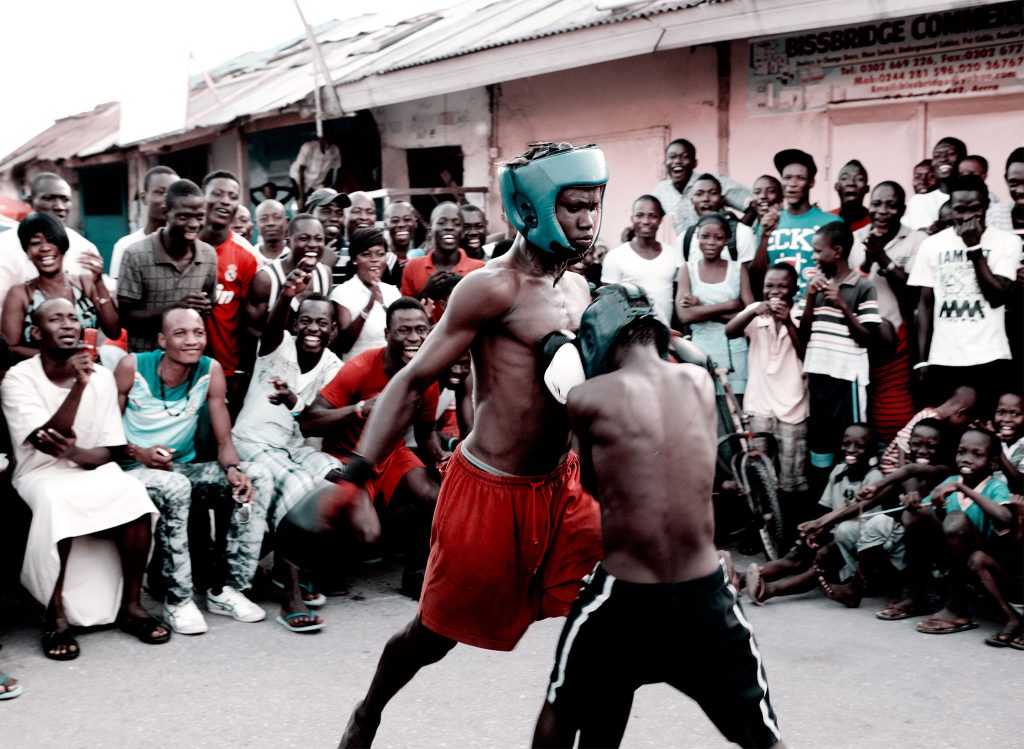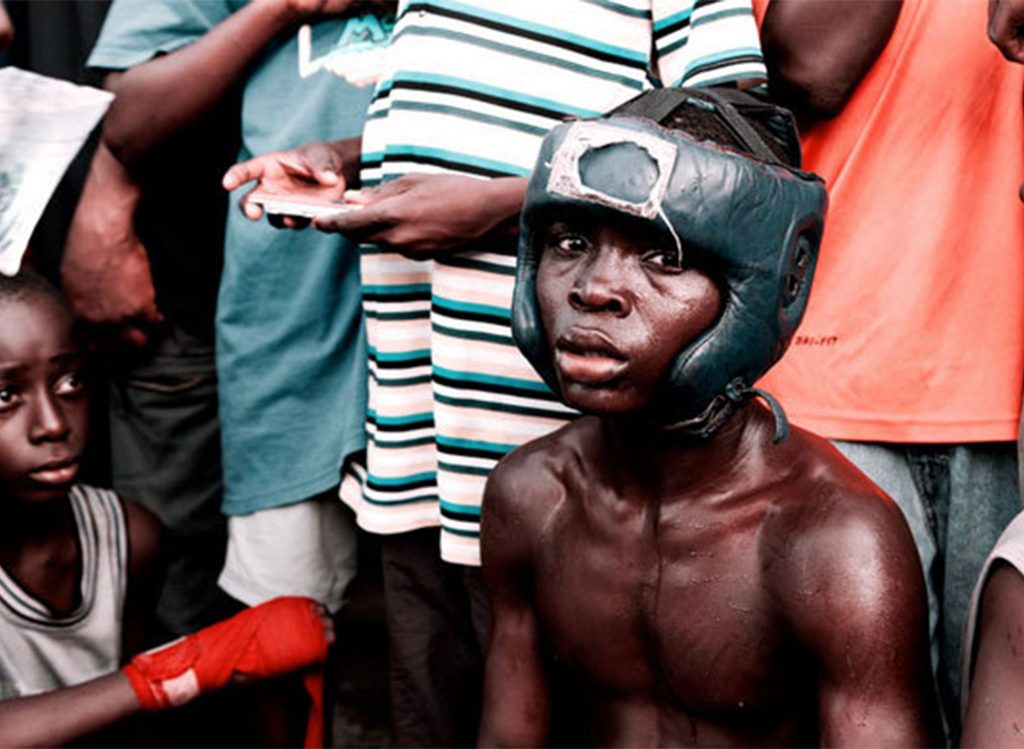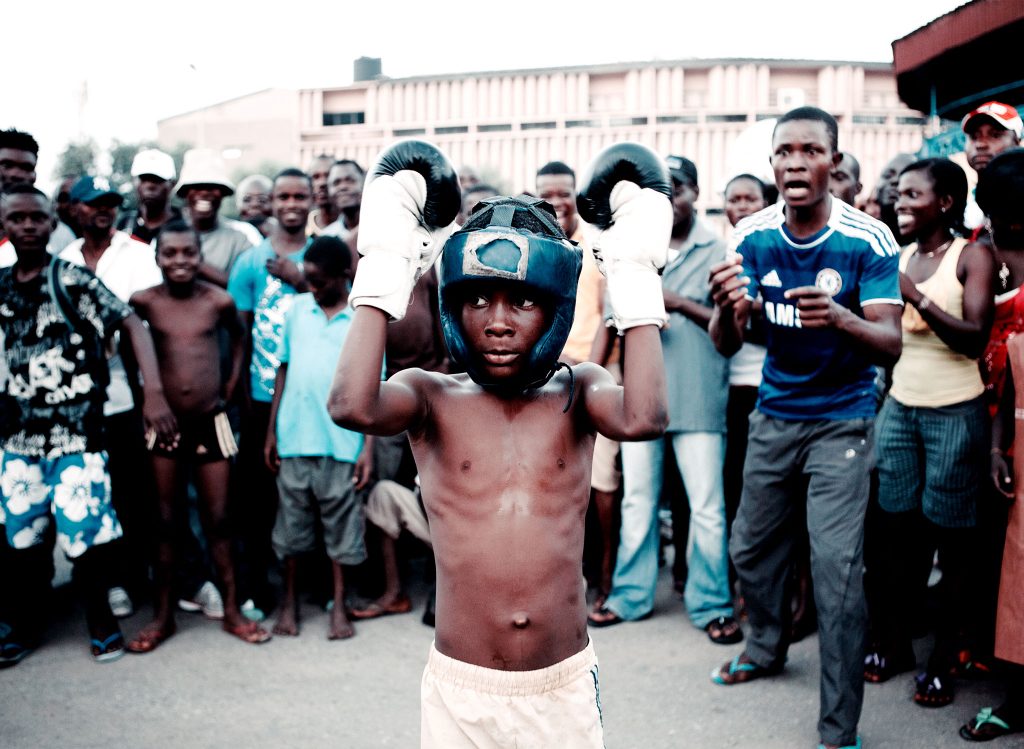
The Secret Life Of The Luchador
Explore the fascinating world of Mexican wrestling.

Explore the fascinating world of Mexican wrestling.
in Body
In their national sport of asafo atwele, young fighters of Bukom weather extreme blows for a chance at glory and a future beyond their struggling community. In his series, ‘Street Fighters’, photographer Luca Sage captures the fragile youth and violence inseparable in the sport.

It is Sunday evening, and a crowd is beginning to form in the small fishing community of Accra, Ghana. In the dwindling light of dusk, an eager crowd buzzes around a makeshift ring, bracing themselves with anticipation. Illuminated by a handful of makeshift light sources, two contenders stand eye to eye in a ring delineated by four wooden benches. The crowd cheers and the fighters stand poised in silence. Judging by their physicality, they can be no more than eight years of age. Some boys waiting in the wings are as young as three years old.
This is asafo atwele (group fighting), a martial art -dance hybrid sport passed down from generations of Ga people- predesceors to the Accra region. For years, this particular brand of sport has played a central civic role in defining a people’s culture. In the past, asafo atwele was used to settle disputes within the community before eventually becoming formalised as a system of combat. Soon after the English colonisation of Ghana, Western boxing and its methods intermingled with the native artform, leading to the enduring tradition of its modern practice today.
Bukom is a place where extraordinary talent occasionally rises amidst the vastly dilapidated town. In the past century, the town has produced 80% of Ghana’s fighting champions that include five world title winners, Bukom Banku (dubbed ‘Africa’s Floyd Mayweather’), and the great Azumah Nelson. For the young men raised in the desperately impoverished town of Bukom, the streets are an ever-present reminder of what they seek to leave behind. Young fighters flock to the dilapidated, concrete-floored gyms to attend daily training sessions, as each fight echoes with the solemnity of hope and salvation. Through the most brutal channel of asafo atwele, new generations are offered the possibility of a way out. Many of the community’s boys begin their formal training at the age of six. Throughout their career, young fighters risk mortal injury for a chance out of Accra and into the most elite boxing clubs of Chicago.
“To be champ is always the goal,” says photographer Luca Sage, who devoted months towards documenting the sport. “Even though the games are friendly, it’s just human nature to have that desire to be the best; to be winner, to be the strongest, to be the fastest.”





Luca Sage is a portrait, editorial and advertising photographer based in the UK. Luca’s portraiture has won various international awards and been selected on four separate occasions for the National Portrait Gallery’s prestigious ‘Taylor Wessing Photographic Portrait Prize’. Sage’s Social Anthropological background is integral to his subsequent photographic practice and favours a ‘slow’ style of documentary portraiture. Visit his site here for more information.

Article from the issue :